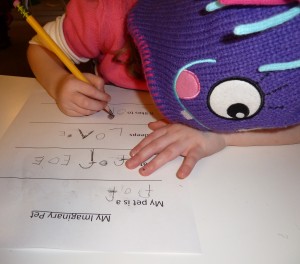 Yesterday, we were lucky enough to have an animal expert, Dr. Steve Gross, join our class to answer some questions about what it is like to work in an animal hospital. Here are a few of the questions they asked.
Yesterday, we were lucky enough to have an animal expert, Dr. Steve Gross, join our class to answer some questions about what it is like to work in an animal hospital. Here are a few of the questions they asked.
Where do you work?
What do you feed the animals?
How much do you work?
What do you do for the animals?
What kind of animals do you help?
What medicines do you give?
How do you give shots?
Do animals ever jump on you?
Do the animals get covered up with a blanket?
What room do the animals go in?
Do the animals have to stay over night?
We learned that veterinarians take care of animals in many of the same ways that doctors take care of people. They even use some of the same medicines. We also learned that animals hate shots just as much as we do, or possibly more! Animals also have specific doctors for checks ups, surgery, and can specialize in different parts of the body just like people doctors do. The biggest difference between animals and humans is that people can tell you what is wrong, while animals cannot. Sometimes it takes some investigating to find out what is wrong with the animal before they can be treated.
We also learned that some veterinarians work in a doctor’s office or emergency room while other vets do house calls. Vets will visit animals at their home if there are many animals that need checked, if the animal is too big to visit the office, or if the owner is not able to drive their pet to their check-up.
The excitement surrounding animals hospitals and veterinarians is continually growing. The students have discussed how they can take care of animals and have relished the opportunity to tell their own pet shenanigan stories. We are very excited to learn more about our furry (and sometimes not so furry) friends and those that take care of them.






